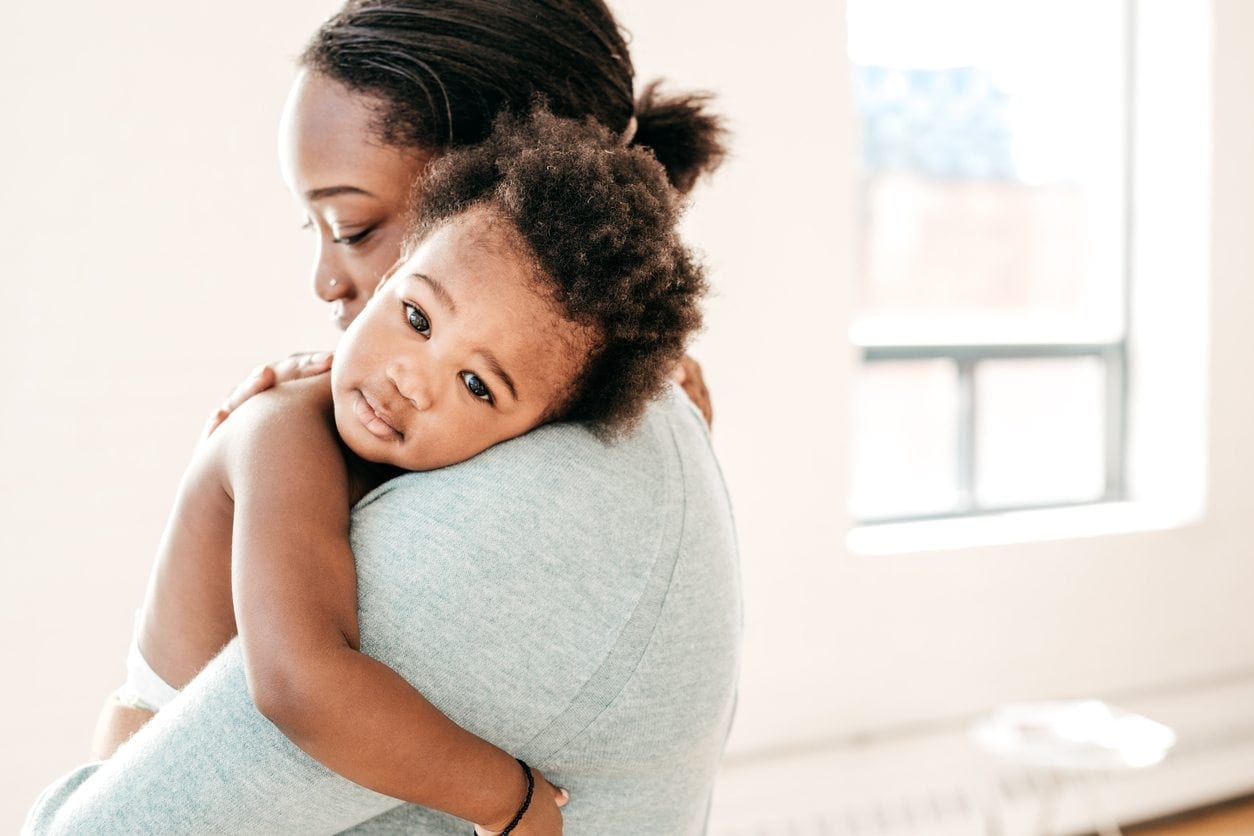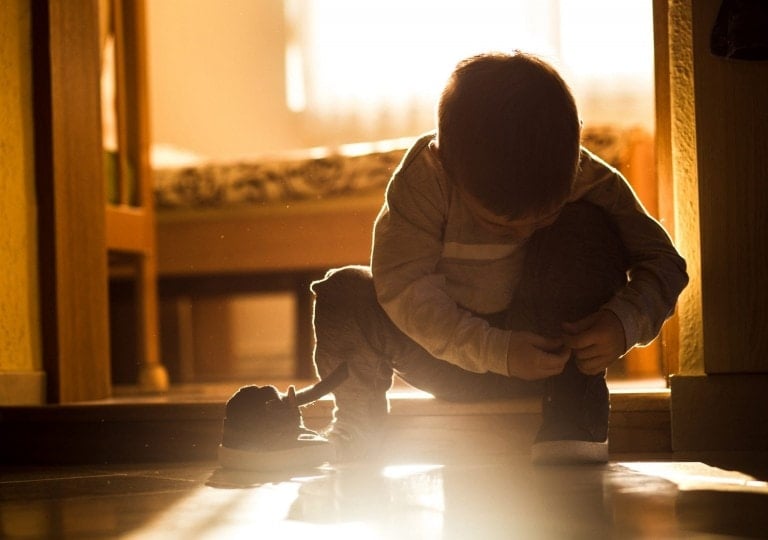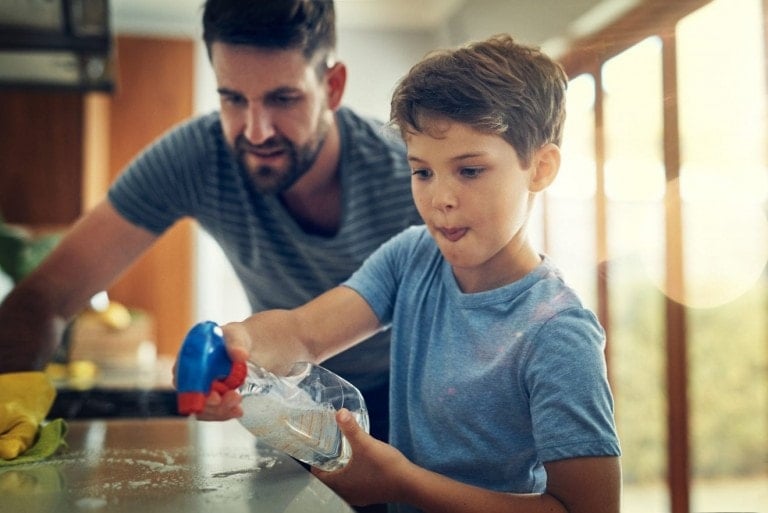There is a significant shift in your life from when your baby is born (well, even before birth, let’s be honest). You are suddenly responsible for a tiny human being for whom no one has given you an instruction manual. As you get used to the basics of keeping your little one alive, you might consider what parenting style you will adopt. Let’s explore attachment parenting so you can determine if it’s a style that will fit your beliefs and your family’s unique dynamic.
What Is Attachment Parenting?
So, what is attachment parenting? Attachment style parenting is a modern parenting philosophy. It promotes attachment between a parent and child by encouraging empathy, responsiveness to a child’s needs, and using certain “tools” or “strategies” that emphasize emotionally rich interactions between the child and caregiver, as well as encouraging bodily closeness and touch.1 It can also be referred to as natural parenting, as it focuses on parents relying on their instincts to make decisions about raising their children.
The Origins of Attachment Parenting
Attachment parenting is a responsive and connection-focused philosophy that emerged after World War II. The first book of its kind was Benjamin Spock’s handbook that suggested mothers should parent according to common sense and loving, physical contact — it was downright radical at the time.2 This book influenced parenting post-war and paved the way for new, gentler parenting philosophies like attachment parenting.
William Sears was a pediatrician who wrote several parenting books (along with Martha Sears) and developed a new philosophy, which he initially called “immersion mothering” in his book “Creative Parenting.” 3 He coined the term “attachment parenting” in later books.4 Many people confuse attachment parenting with attachment styles, but they are different.
John Bowlby and Mary Ainsworth originally defined attachment and four key attachment styles: secure, disorganized, ambivalent, and avoidant.5 Their meaning of secure attachment describes how a primary caregiver who is sensitive and responsive to their child’s needs will create a sense of trust in their child. Around the time attachment theories were gaining awareness and momentum, William and Martha Sears indicated that they later changed their parenting philosophy to attachment parenting, as the concept of attachment was increasingly becoming recognized and the theory itself was well-researched.6 The term “attachment parenting” and specific links to the attachment theories of Bowlby and Ainsworth only came later. Sears’ work on attachment parenting has not been scientifically linked to secure attachment as the outcome of their strategies.
The Seven B’s of Attachment Parenting
When Sears developed the principles of attachment parenting, he outlined seven principles based on reading babies’ cues to meet their biological needs. These seven principles are:4
1. Birth Bonding
Sears outlined that the first six weeks after birth are critical in forming healthy parent-child attachments in the long term. He encourages skin-to-skin contact, constant presence or togetherness, and nurturing the mother provides.
2. Breastfeeding
This is seen as a critical element of attachment parenting, as breastfeeding is a natural and healthy way to nurture and soothe a baby. It also encourages close physical contact and creates early bonds when a mother responds to her child’s hunger cries. However, remember that breastfeeding is not always possible for some people; breastfeeding (or not) doesn’t determine who is a good parent.
3. Baby Wearing
This refers to having a baby close by at all times and wearing them in a sling or wrap. This is key in attachment parenting, which promotes physical closeness, as the baby is attached to the mom, and she goes about her daily business but constantly provides touch, comfort, and nurturing while “wearing” her baby.
4. Bed Sharing
William Sears encourages bed-sharing. He indicates that this reduces separation anxiety overnight and provides easy access to the mom for breastfeeding. Remember, every family needs to explore safe sleep practices and determine the most appropriate sleep arrangements for their family rather than use a one-size-fits-all approach. Please review safe sleeping recommendations before making any decisions.
5. Baby’s Crying Is Communication
Instead of seeing crying or screaming as manipulation or a baby being “bad,” attachment parents understand that cries are babies’ only way of communicating their needs. The attachment style of parenting encourages parents to pay close attention to these cries, try to decipher them, and then respond to their needs to foster a strong and secure bond.
6. Beware of Baby Trainers
William Sears does not promote or condone sleep training in his books. His thoughts center around the lack of training of sleep trainers or consultants and believes that sleep training hardens a mother against her baby’s cries, which disrupts attachment and bonding as she is not responding to the child’s needs. As a result, they will become shut down or nonresponsive. Families should research supports or strategies around getting a good night’s sleep. It is an entirely individual decision to make, is based on unique needs/beliefs, and is one that sits with that family alone
7. Balance
No one can be a perfect parent 100% of the time. Attachment parenting encourages parents to understand and acknowledge that they won’t always get it right, nor should they strive to become perfect. It also acknowledges the challenge of finding a balance between all your needs as a parent — emotional, psychological, and social — while navigating the new and evolving needs of your little one. It’s about finding some time of balance or a happy medium where possible.
Pros of Attachment Parenting
As many of the principles align with attachment theories, there are some significant pros to this style of parenting:
Secure Attachment Benefits
Significant research exists and indicates that children with secure attachment to their parents will experience benefits such as:7
- Being better problem-solvers
- Being more independent
- Having increased empathy
- Being more resilient
- Having strong and more positive relationships
- Experiencing higher self-esteem
- Being less likely to develop depression or anxiety
Although attachment parenting isn’t the same as secure attachment (which is what is referred to in this research), it promotes similar principles. It encourages parents to be sensitive to and responsive to their child’s needs. This can help form a secure attachment. Remember that although the principles are there, the Sears’ work on attachment parenting has not been scientifically linked to secure attachment being the outcome of their strategies.
Support for Breastfeeding
The American Academy of Pediatrics (AAP) and the World Health Organization (WHO) recommend exclusive breastfeeding for up to 6 months and tandem breastfeeding alongside complementary solids for up to 2 years or older.8 Also, 60% of mothers stop breastfeeding before they intend to. One key reason they cite is that they lack support or it’s not part of their cultural norms.8 Attachment parenting encourages and promotes breastfeeding, which may help moms who need to see breastfeeding normalized or feel supported to continue their breastfeeding journey.
Less Stress for Positive Development
Some research indicates that when parents are responsive to their child’s needs, it reduces the stress chemicals in their body.9 This can positively influence their brain’s development, and they are more resilient or able to cope with stress and regulate their emotions as they grow.
Cons of Attachment Parenting
Some cons of this parenting style include:
Pressure to Breastfeed
Although it’s positive to encourage breastfeeding to help normalize it and increase support for it, sometimes, pressure adds stigma or shame if a mother doesn’t wish to or cannot breastfeed for whatever reason. This stress may impact a mother’s self-esteem and well-being. Stress can exacerbate breastfeeding issues, including difficulty with the let-down reflex and decreased breast milk supply.10 So, all that pressure could have the opposite effect.
Bed Sharing
There is conflicting research — the AAP says the risk of suffocation or sudden infant death syndrome (SIDS) is higher in bed sharing as opposed to room sharing due to potential risks posed by soft bedding, mattresses, or a parent rolling onto their child.11 However, other research indicates that if parents follow safe sleeping practices when bed-sharing, particularly with breastfeeding, it can lower the risk.12 You and your family must conduct your research to decide whether bed or room sharing is for you, keeping safe sleeping practices paramount in either situation.
Not Enough Chance for a Break
The practice of closeness and constant attention to an infant or small child can be exhausting. There are few chances for a break, and some moms feel touched out or have their own life experiences that make touch, being held, or even the sensory input of constantly being around other people (particularly loud, wailing babies) distressing. This parenting approach can make it hard for some moms to establish their sense of self, engage in self-care, and have healthy eating or sleeping patterns. Using some tools or following the strategies 100% of the time might not suit them.
Styles Leaves Dads Out
Sears is very vocal about mothers being primary caregivers and fathers being there to help and support mothers, which allows the mother to devote herself to her baby fully. This dynamic will not suit all families. For instance, if the father is the primary caregiver or a child comes into a two-father household, it could alienate or shame their preferences for primary caregiving by dads. Excluding dads or minimizing their role lessens their chance to bond and puts more pressure on moms to take on the lion’s share of caring.13
Babies don’t come with an instruction manual, and many parenting books and philosophies make it hard to decide which one to implement. In likelihood, there is no one “right” way; instead, there is a right way for you and your family. It might be attachment parenting, or it could be some combination of various philosophies. Just as long as you ensure that you feel comfortable with your decision and follow safety and best practice guidelines for things like sleep.































